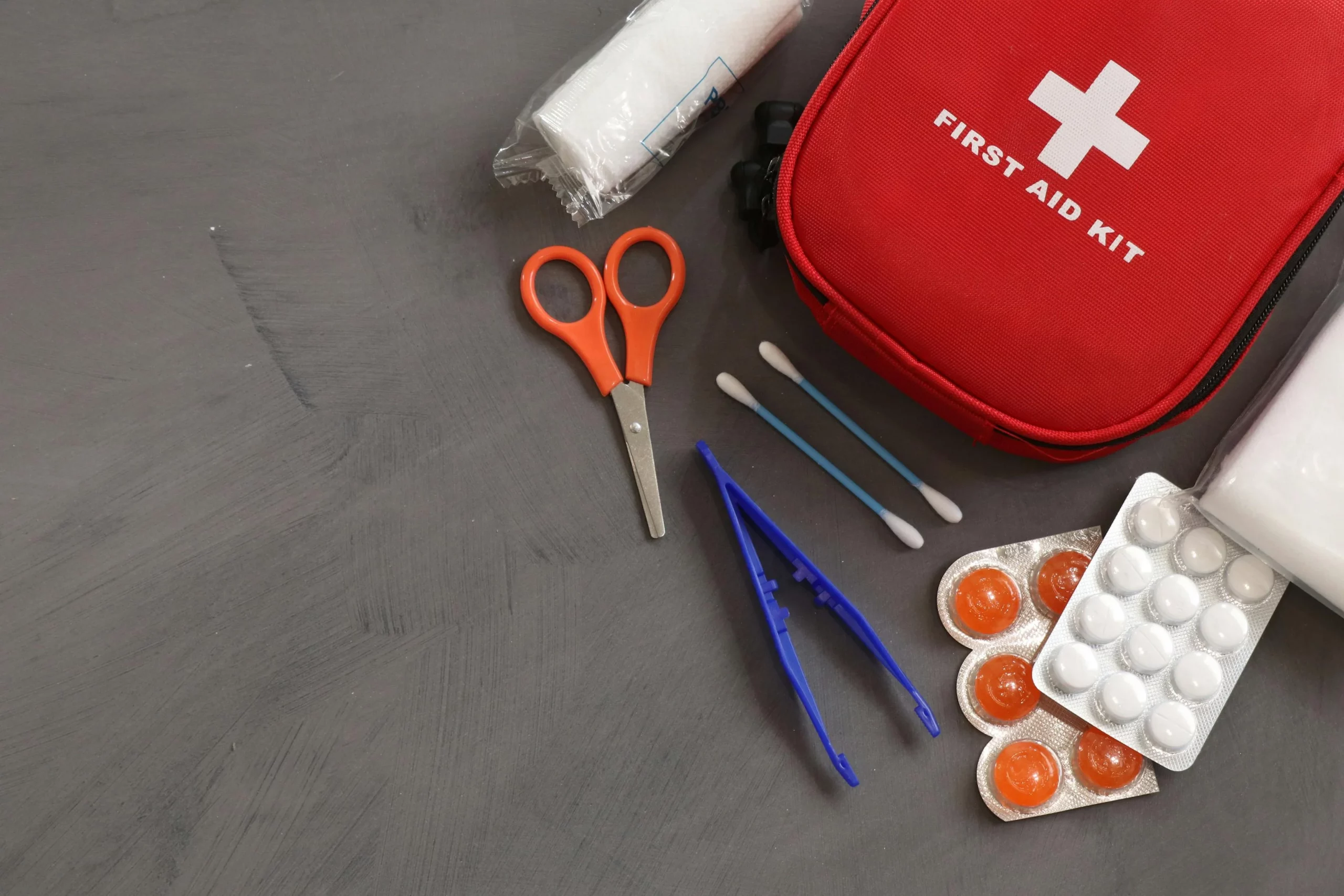Creating a first aid kit is an essential step for any household, workplace, or outdoor adventure. Here’s a guide to help you assemble one:
Container:
Choose a waterproof, durable container to store your first aid supplies. A plastic or metal box with a lid works well. You can also use a backpack or pouch for portability.
Essential Supplies:
- Bandages and Dressings:
- Adhesive bandages (various sizes)
- Sterile gauze pads
- Adhesive tape
- Elastic bandages (Ace bandage)
- Sterile eye pads
- Antiseptics:
- Antiseptic wipes or solution (e.g., iodine or alcohol wipes)
- Hydrogen peroxide
- Antiseptic ointment or cream (like Neosporin)
- Tools and Instruments:
- Scissors
- Tweezers
- Thermometer (preferably digital)
- Safety pins
- Disposable gloves
- Medications:
- Pain relievers (e.g., acetaminophen, ibuprofen)
- Antihistamine for allergic reactions (e.g., Benadryl)
- Anti-inflammatory cream (e.g., hydrocortisone)
- Aspirin (for heart attacks, under medical guidance)
- Personal prescription medications
- Additional Supplies:
- CPR mask
- Instant cold packs
- Medical tape
- Oral rehydration salts
- Eyewash solution
- First aid manual or guide
- Emergency contact information
Considerations:
- Personal Needs: Tailor your kit to the specific needs of your household or group. For example, if someone has allergies, include allergy medication.
- Specialty Items: If you have specific medical conditions or participate in particular activities (e.g., hiking, camping), consider adding items like insect repellent, blister treatment, or a splint.
- Check and Replace: Regularly check your first aid kit for expired medications and supplies. Replace items as needed.
- Location: Keep your first aid kit in a readily accessible location, known to all household members or colleagues.
Optional Additions:
- A basic first aid manual or instruction booklet.
- Personal medications such as prescription drugs or EpiPen for severe allergies.
- A small flashlight with extra batteries.
- Whistle for attracting attention in emergencies.
Organization:
- Organize your first aid supplies in labeled pouches or compartments for easy access.
- Keep frequently used items towards the top or in a separate compartment for quick retrieval during emergencies.
Training:
Lastly, having a first aid/CPR training course can greatly enhance the effectiveness of your first aid kit. Knowing how to use the items in the kit properly can make a significant difference in an emergency situation.
Remember, a first aid kit is a proactive measure to handle emergencies effectively. Regularly check and update your kit to ensure it remains relevant and functional.

